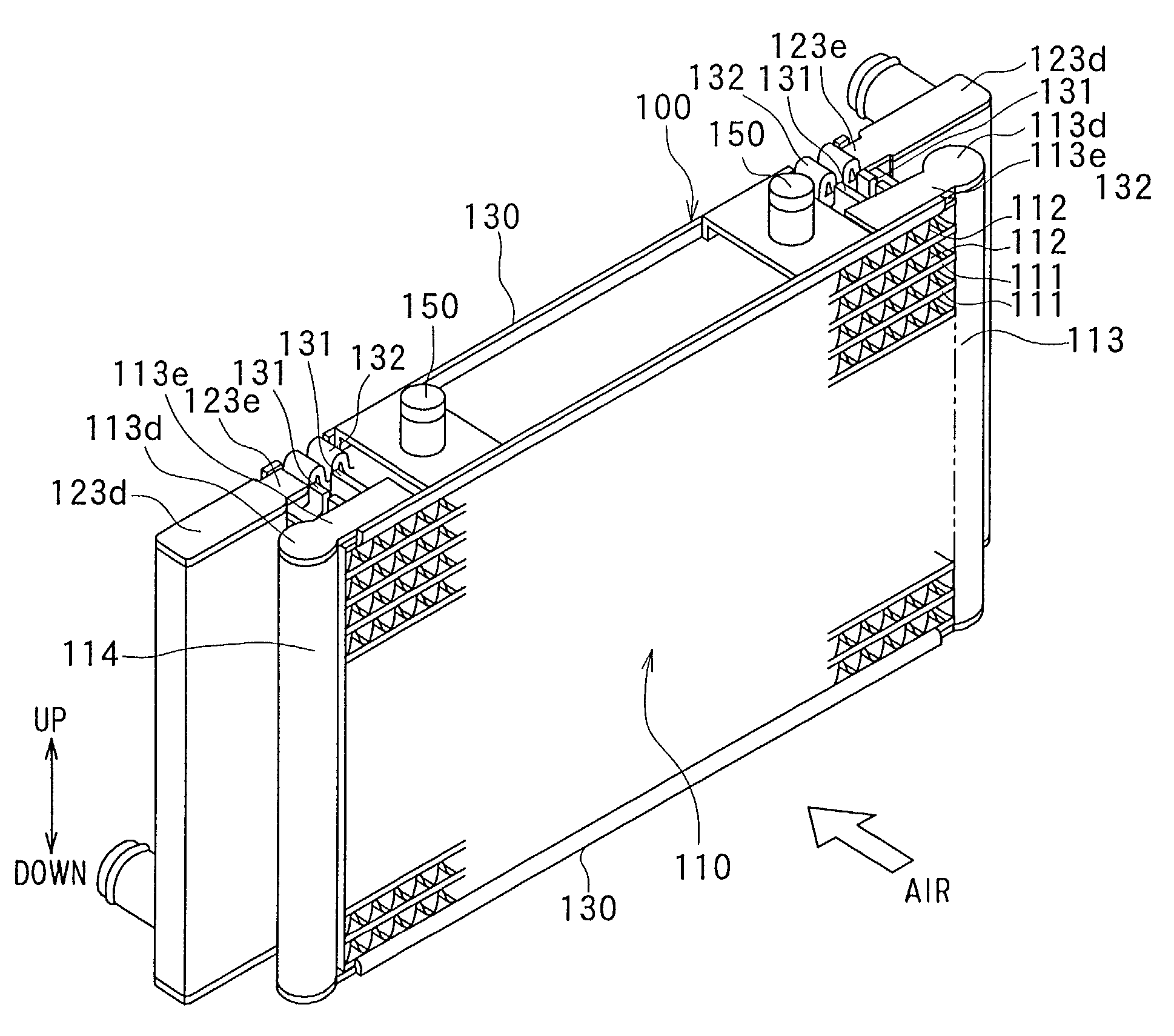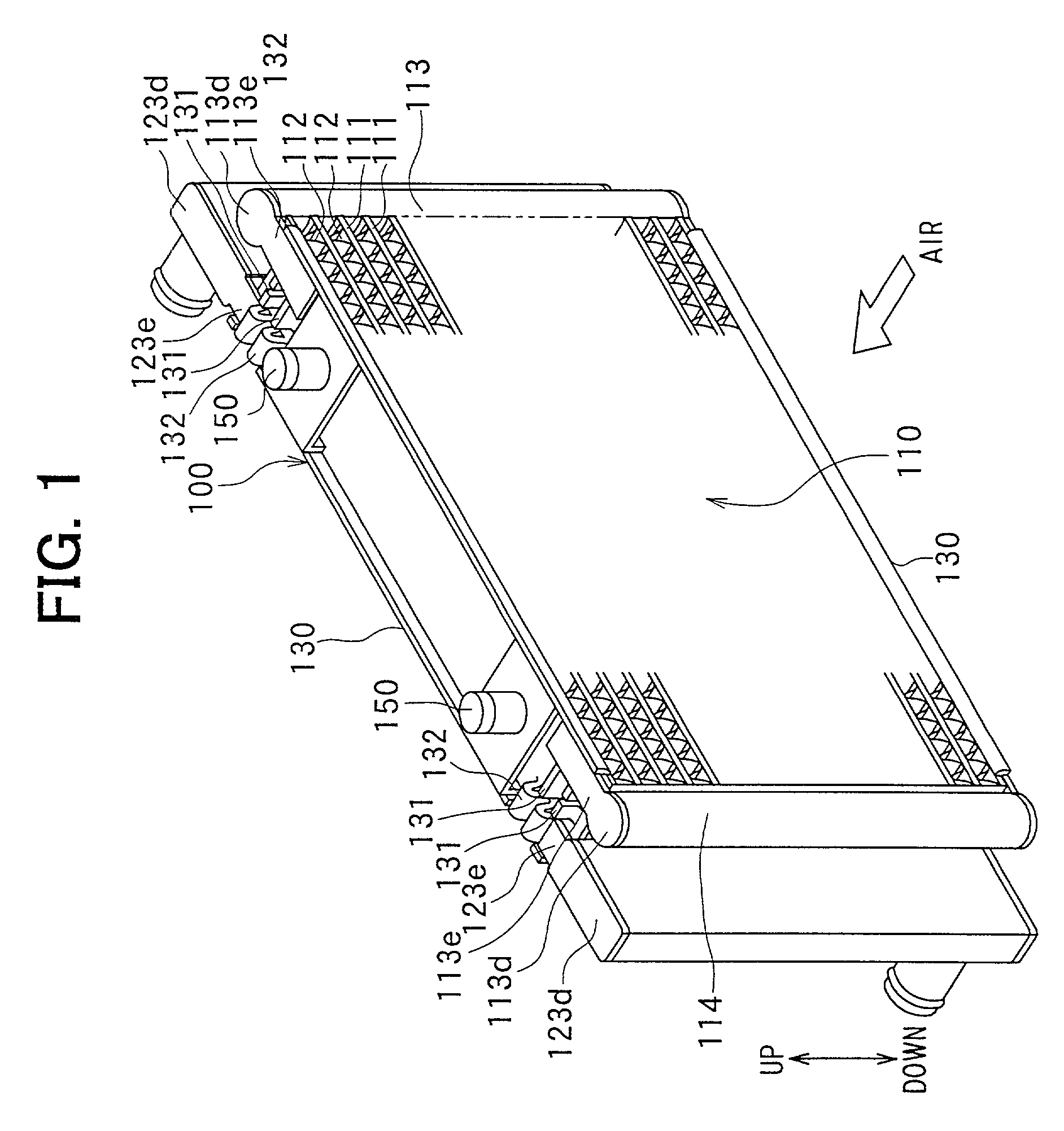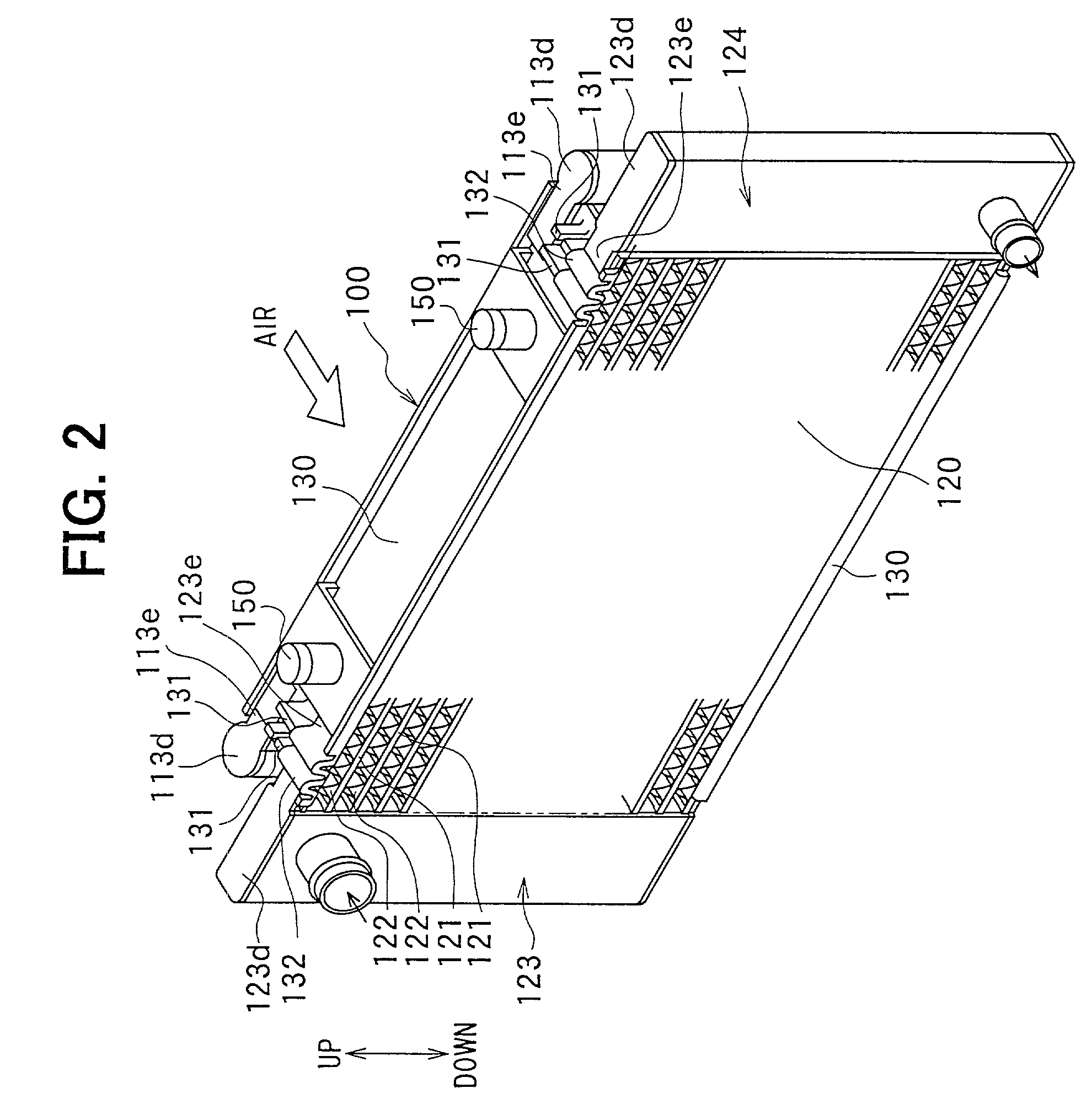Double heat exchanger with condenser and radiator
a heat exchanger and condenser technology, applied in the field of double heat exchangers, can solve the problems of deteriorating performance of holding and fixing both heat exchangers, reducing the strength of side plates,
- Summary
- Abstract
- Description
- Claims
- Application Information
AI Technical Summary
Benefits of technology
Problems solved by technology
Method used
Image
Examples
first embodiment
[0024] A first preferred embodiment of the present invention will be now described with reference to FIGS. 1-8B. In the first embodiment, the present invention is typically applied to a double heat exchanger 100 in which a condenser 110 of a vehicle refrigerant cycle and a radiator 120 for cooling engine-cooling water are integrated. The condenser 110 is disposed at an upstream air side of the radiator 120, as shown in FIGS. 1 and 2.
[0025] Refrigerant circulating in the refrigerant cycle is heat-exchanged with air in the condenser 110 to be cooled. The condenser 110 includes plural condenser tubes 111 (first tubes) made of an aluminum material, plural condenser fins 112 (first fins) each of which is made of an aluminum material and is disposed between adjacent condenser tubes 111 to facilitate a heat exchange between refrigerant and air, and condenser header tanks 113, 114 (first header tank) which are made of an aluminum material and are disposed at both longitudinal ends of each c...
second embodiment
[0044] A second preferred embodiment of the present invention will be now described with reference to FIG. 9. As shown in FIG. 9, in the second embodiment, a part of a side plate 130 is bent in a circular arc shape (dome shape) to form a flexible portions 132. Here, a curvature radius of the flexible portion 132 is made longer than a predetermined dimension, so that the stress generated in the flexible portion 132 can be made smaller, and it can prevent the strength of the side plate 130 from being reduced.
[0045] In the second embodiment, the other parts in the double heat exchanger are similar to those of the above-described first embodiment.
third embodiment
[0046] A third preferred embodiment of the present invention will be now described with reference to FIGS. 10A and 10B. In the third embodiment, as shown in FIGS. 10A and 10B, a flexible portion 132 is constructed by a bent portion 132b, and a recess portion recessed toward a curvature radial center is provided at a top portion of the bent portion 132b to form a reinforcement portion 132c. By providing the reinforcement portion 132c, a bending strength of the bent portion 132b of the flexible portion 132 can be increased.
[0047] In the third embodiment, the reinforcement portion 132c is provided in the flexible portion 132, so that the bending strength of the bent portion 132b can be increased in a range where the heat stress generated in the tubes 111, 121 can be absorbed by the flexible portion 132.
PUM
 Login to View More
Login to View More Abstract
Description
Claims
Application Information
 Login to View More
Login to View More - R&D
- Intellectual Property
- Life Sciences
- Materials
- Tech Scout
- Unparalleled Data Quality
- Higher Quality Content
- 60% Fewer Hallucinations
Browse by: Latest US Patents, China's latest patents, Technical Efficacy Thesaurus, Application Domain, Technology Topic, Popular Technical Reports.
© 2025 PatSnap. All rights reserved.Legal|Privacy policy|Modern Slavery Act Transparency Statement|Sitemap|About US| Contact US: help@patsnap.com



